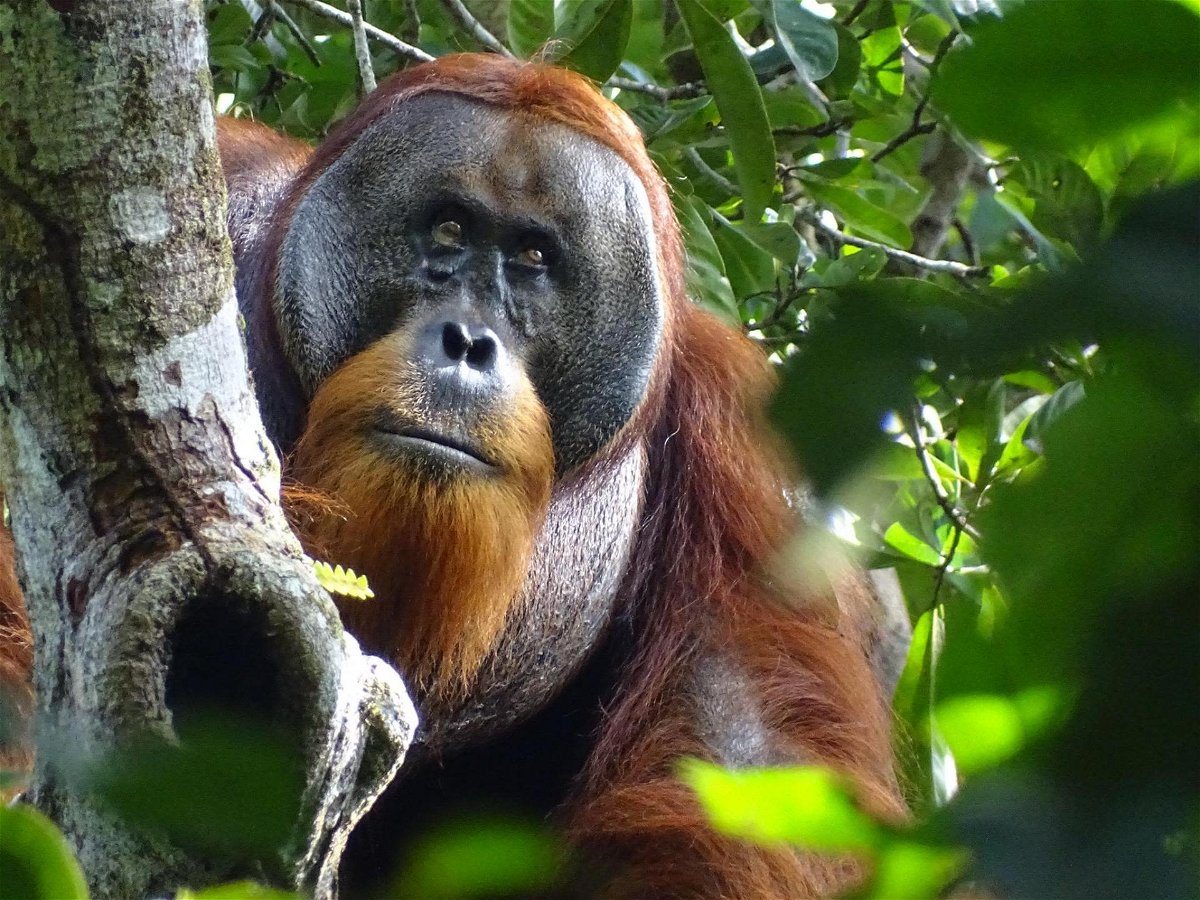Orangutan observed treating wound using medicinal plant in world first

By Jack Guy, CNN
(CNN) — Scientists working in Indonesia have observed an orangutan intentionally treating a wound on their face with a medicinal plant, the first time this behavior has been documented.
Rakus, a male Sumatran orangutan, treated a wound on his face by chewing leaves from a climbing plant named Akar Kuning and repeatedly applying the juice to it, according to a paper published in the journal Scientific Reports on Thursday.
Rakus then covered the wound with the chewed up leaves, which are used in traditional medicine to treat illnesses like dysentery, diabetes and malaria, said scientists.
Study lead author Isabelle Laumer, a post-doctoral researcher at the Max Planck Institute of Animal Behavior, told CNN that the team were “very excited” by their observations, which took place in June 2022 in the Suaq Balimbing research area in Gunung Leuser National Park, Indonesia.
Although other wild primate species are known to swallow, chew or rub themselves with plants that have medicinal properties, scientists have never seen them used to treat recent wounds.
The team believe that Rakus intentionally used the plant to treat his wound as he applied it repeatedly in a process that researchers say took several minutes.
“This possibly innovative behavior presents the first report of active wound management with a biological active plant in a great ape species,” she said.
Researchers believe that Rakus most likely sustained the wound in a fight with another male orangutan, which are rare in the area thanks to “high food availability, high social tolerance between orangutans and relatively stable social hierarchies,” Laumer explained.
This means that orangutans rarely suffer wounds, giving researchers few opportunities to observe this behavior.
As for how Rakus would have learned how to treat a wound, one possibility is “accidental individual innovation,” said Laumer.
The orangutan may have touched his wound accidentally while feeding on the plant and felt immediate pain relief due to its analgesic – pain relieving – effects, making him repeat the behavior, she explained.
Another possible explanation is that Rakus learned how to treat a wound from other orangutans in the area where he was born, said Laumer.
The observation “provides new insights into the existence of self-medication in our closest relatives and in the evolutionary origins of wound medication more broadly,” added Laumer, raising the possibility that wound treatment may originate in a common ancestor shared by humans and orangutans.
Researchers plan to closely observe any other wounded orangutans in the area to see if the behavior is repeated, said Laumer, who added that the findings underline the commonalities between humans and orangutans.
“We are more similar than different,” she said. “We hope this study raises awareness on their critically endangered status in the wild.”
Sign up for CNN’s Wonder Theory science newsletter. Explore the universe with news on fascinating discoveries, scientific advancements and more.
The-CNN-Wire
™ & © 2024 Cable News Network, Inc., a Warner Bros. Discovery Company. All rights reserved.